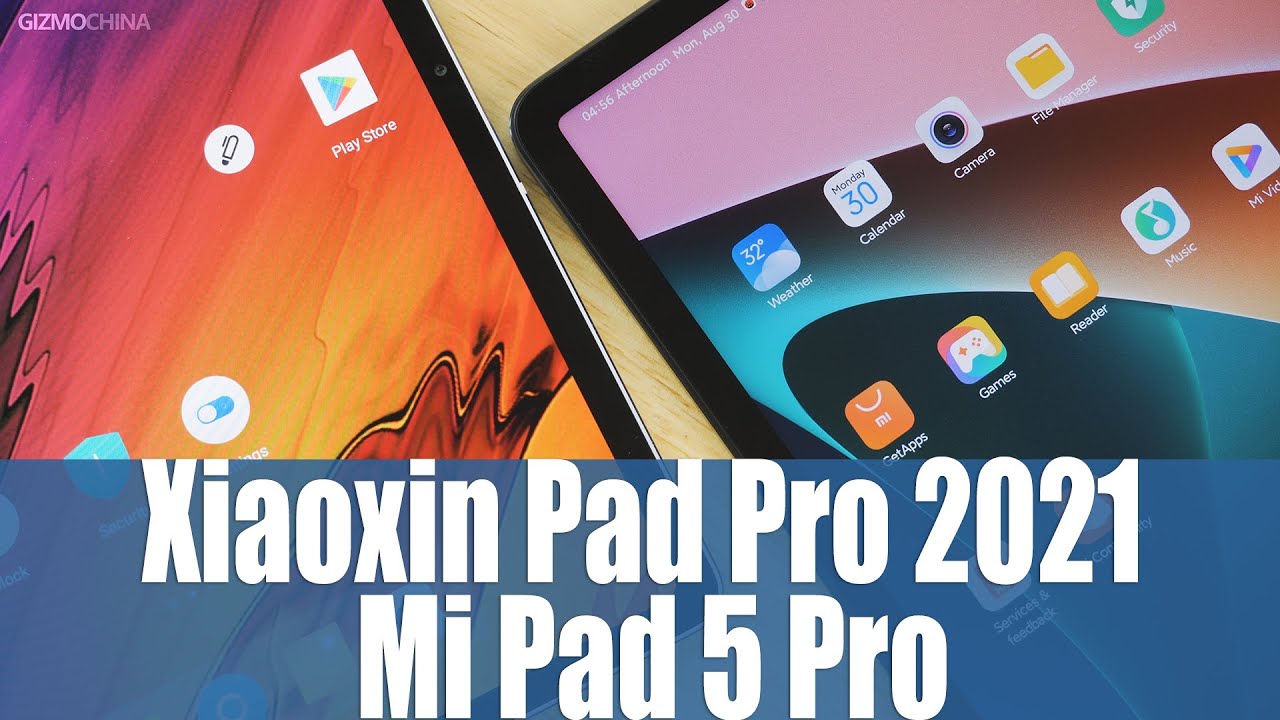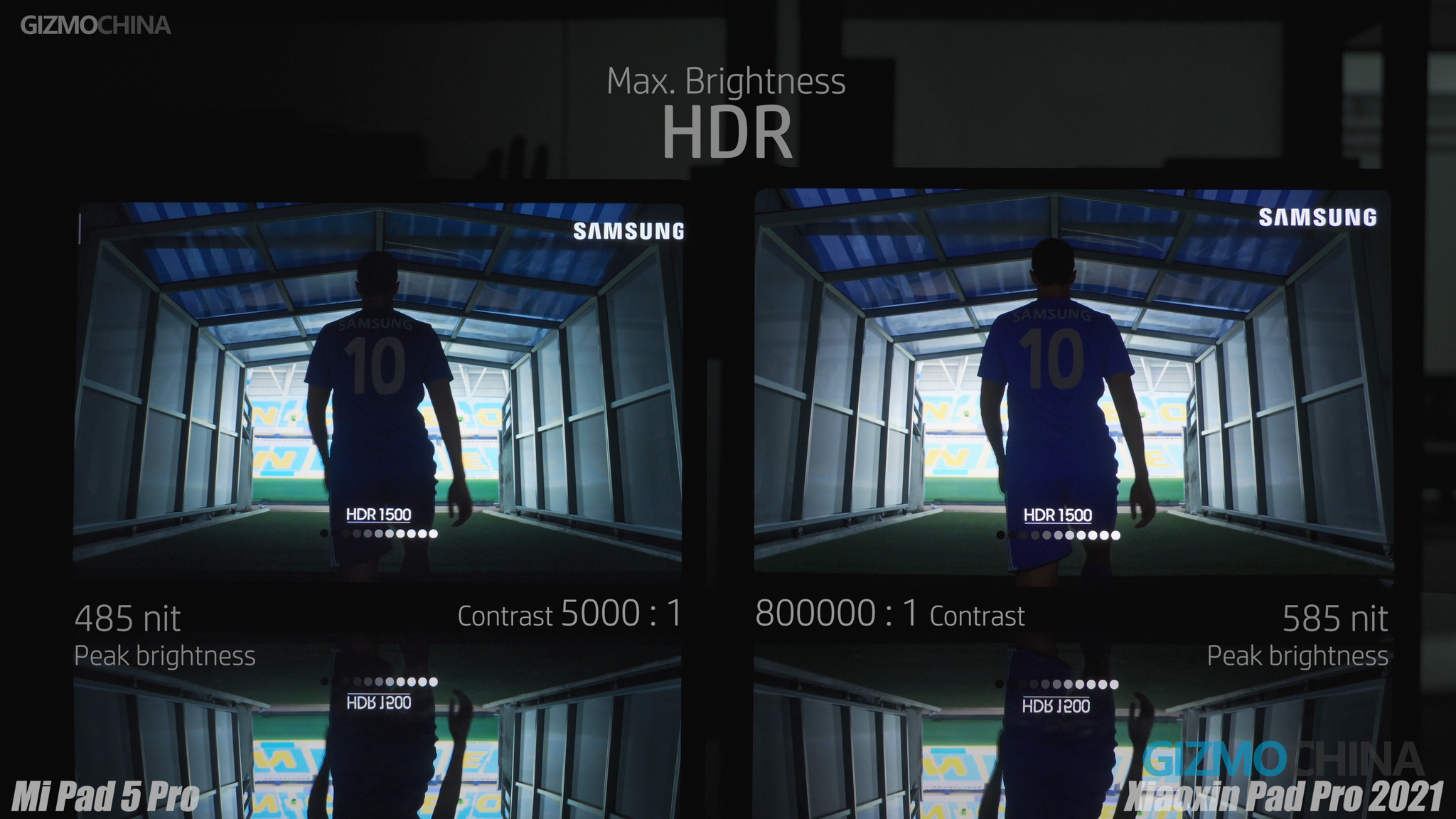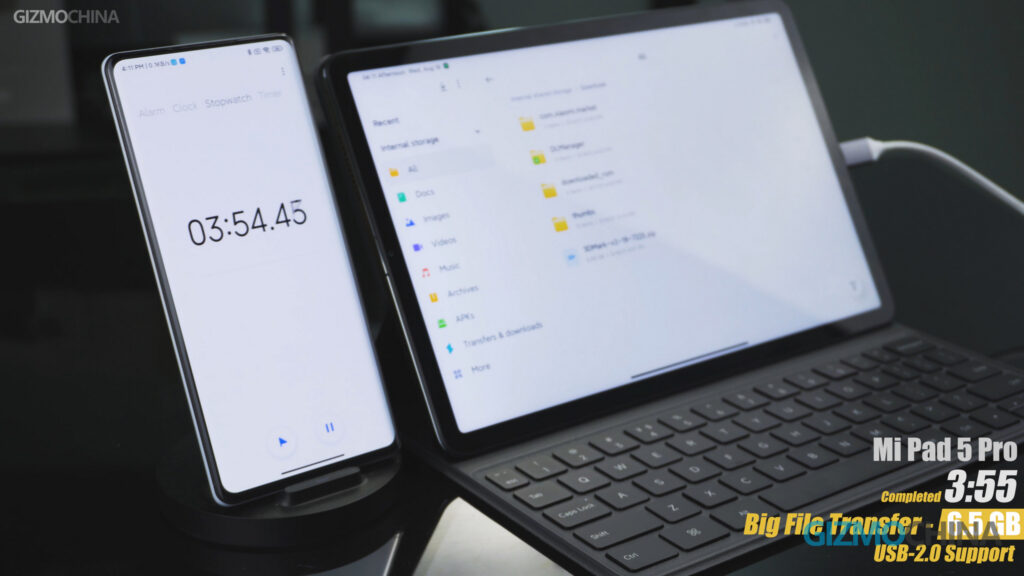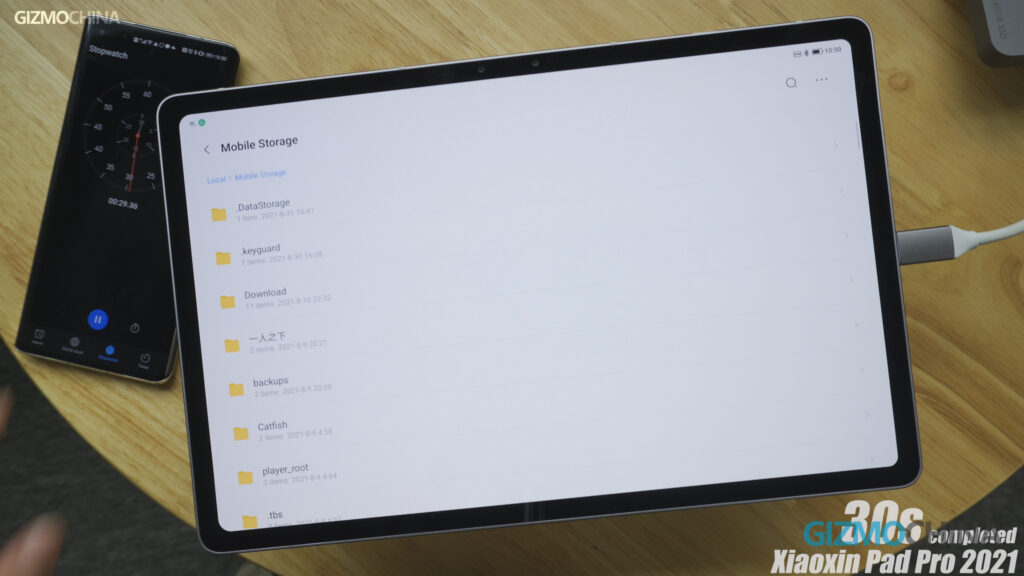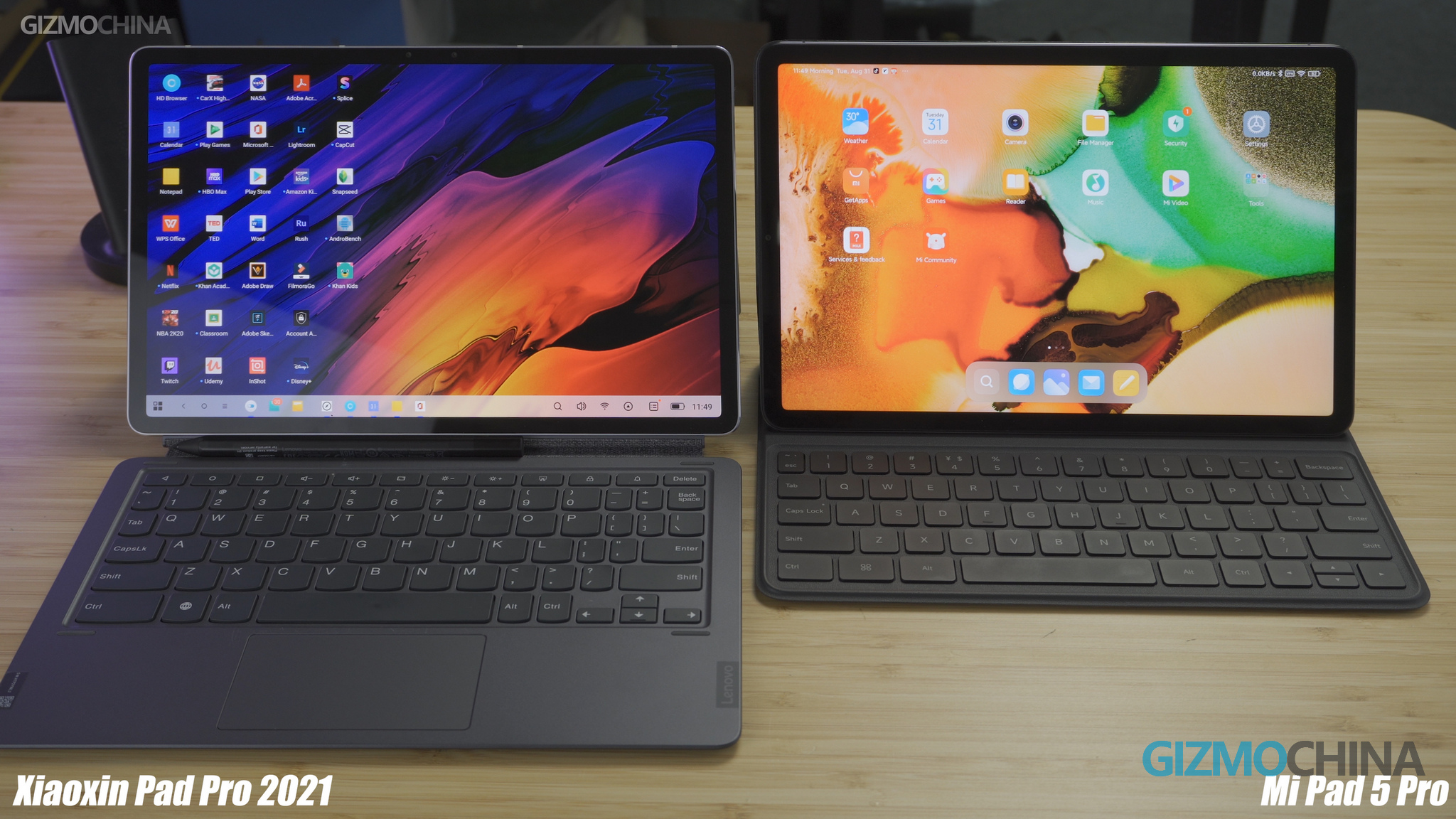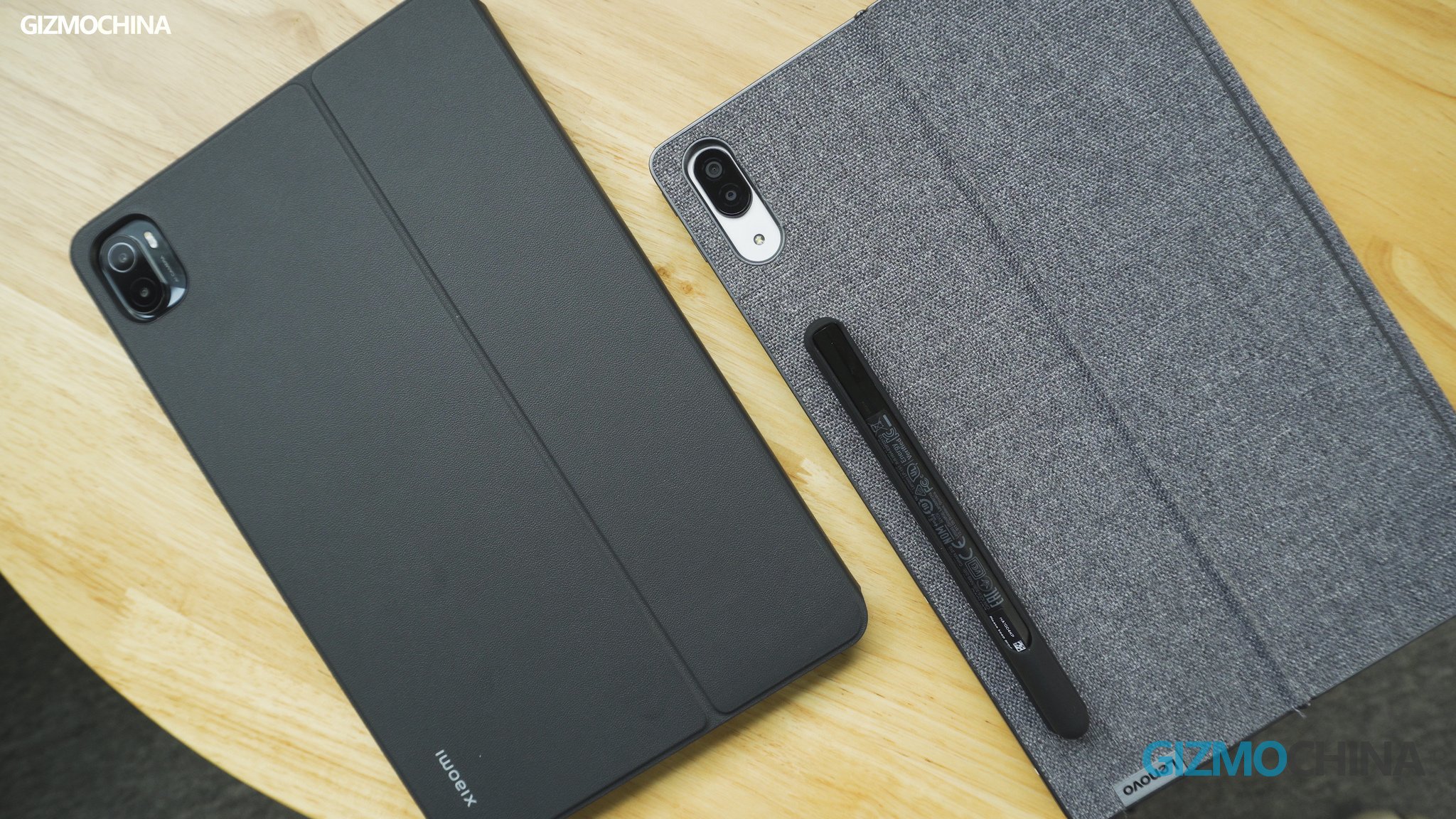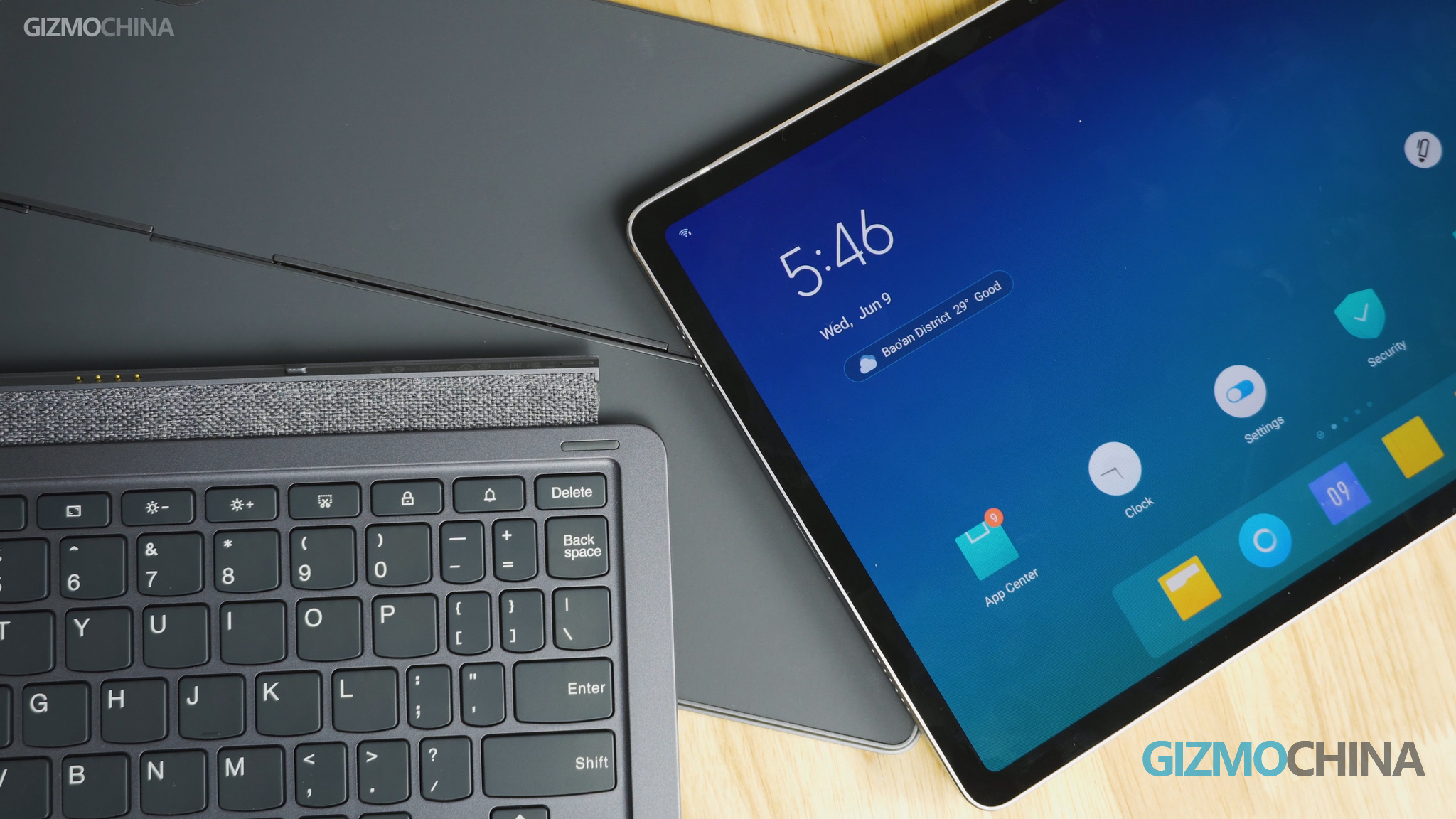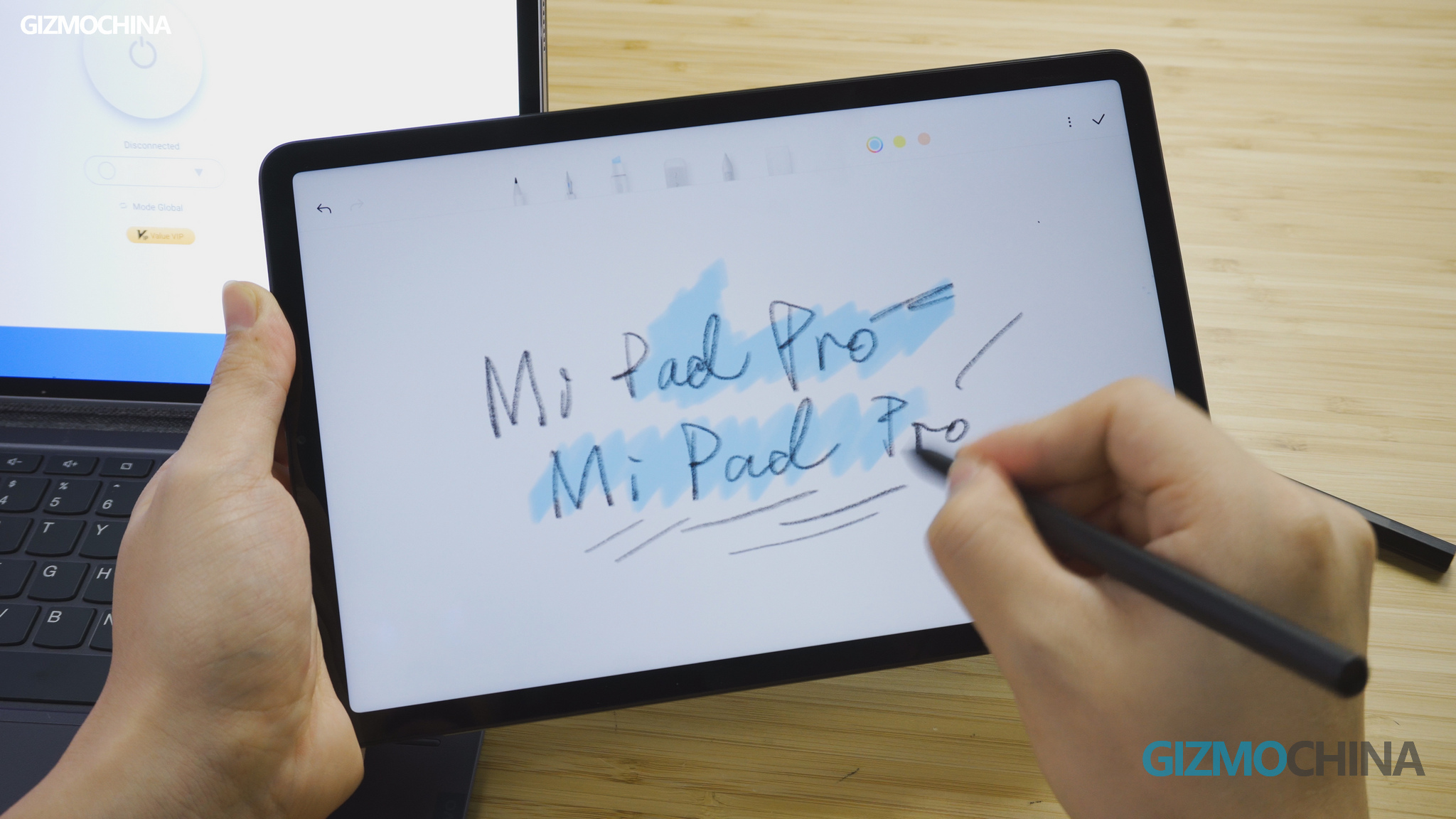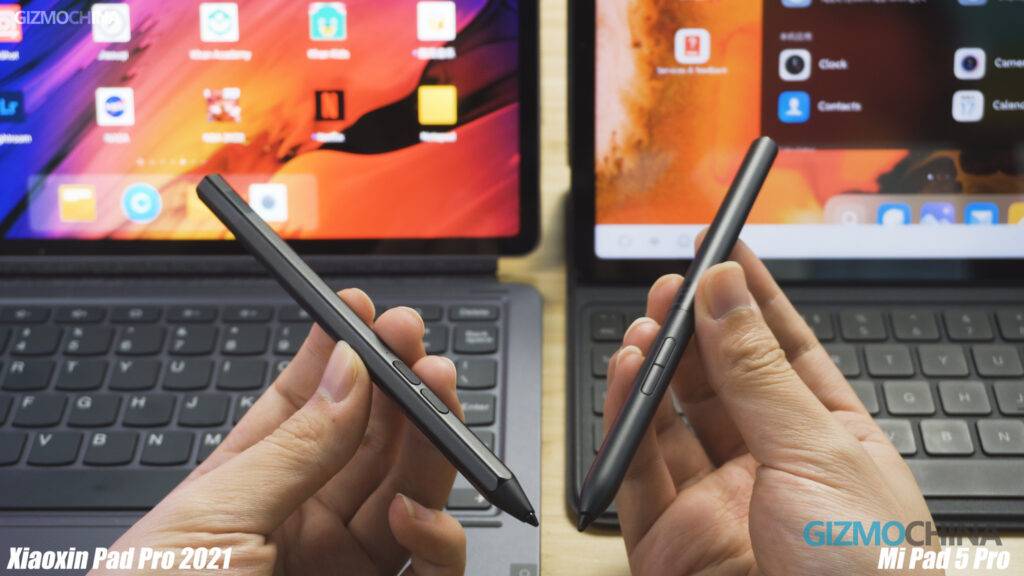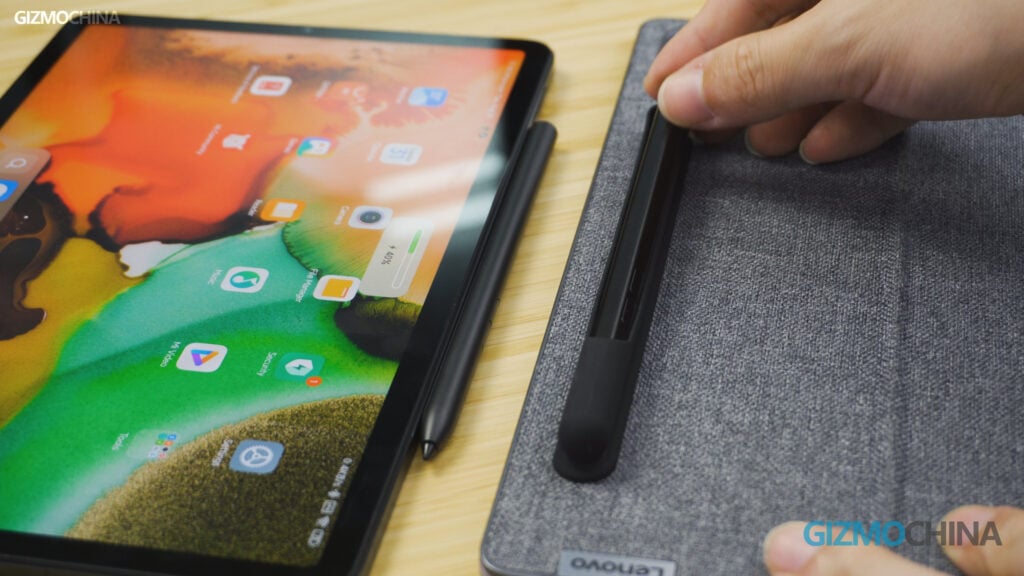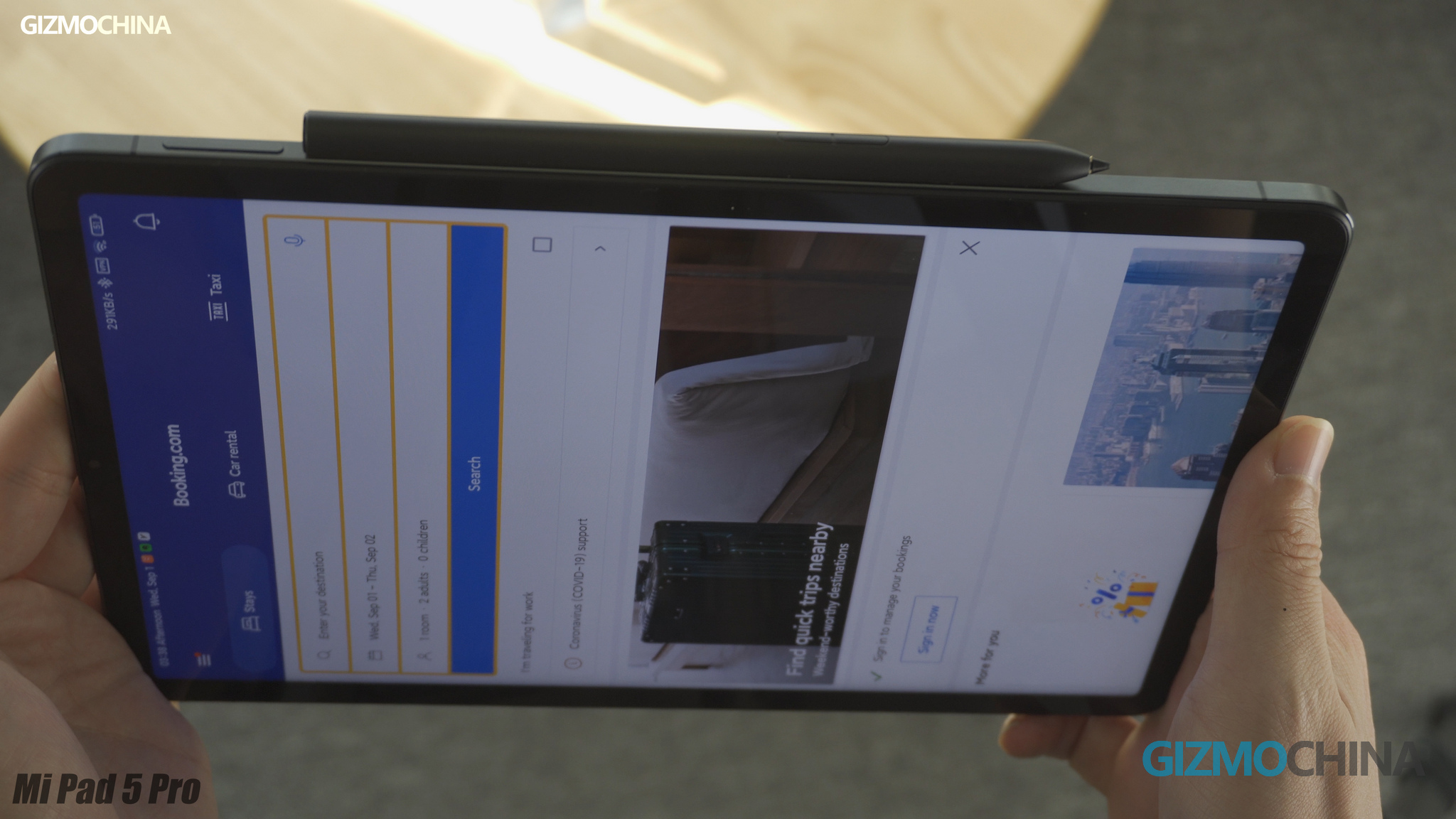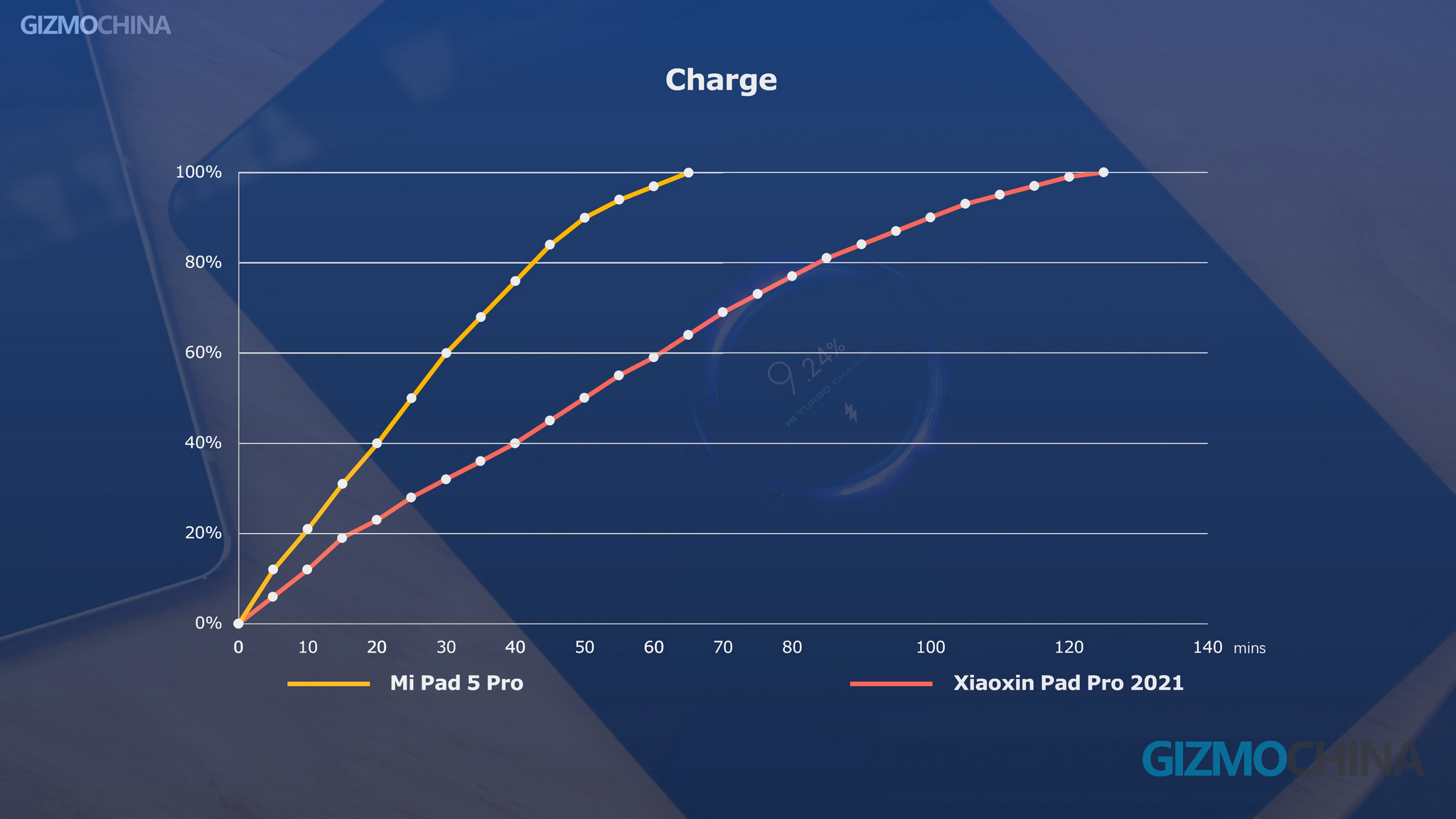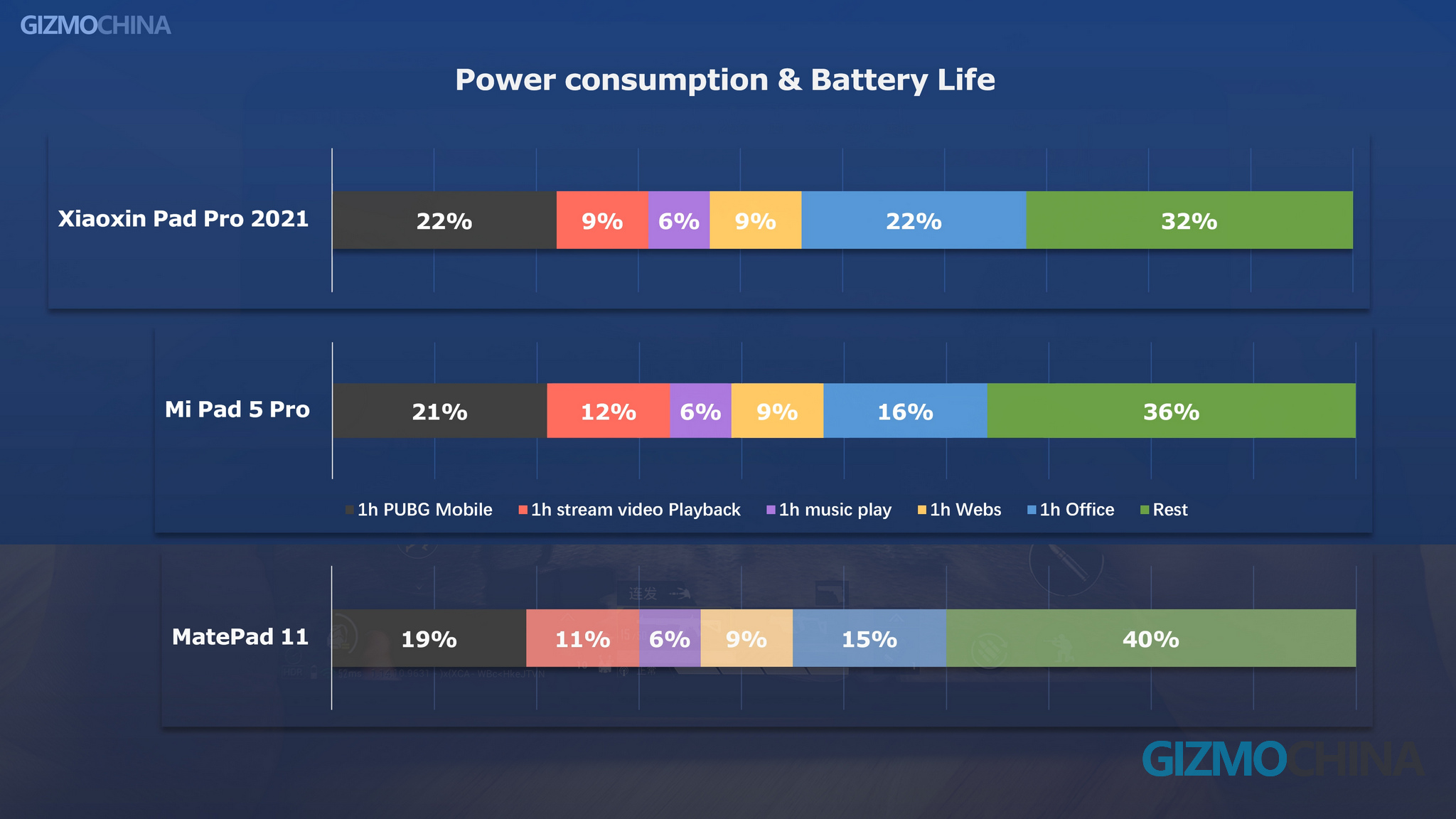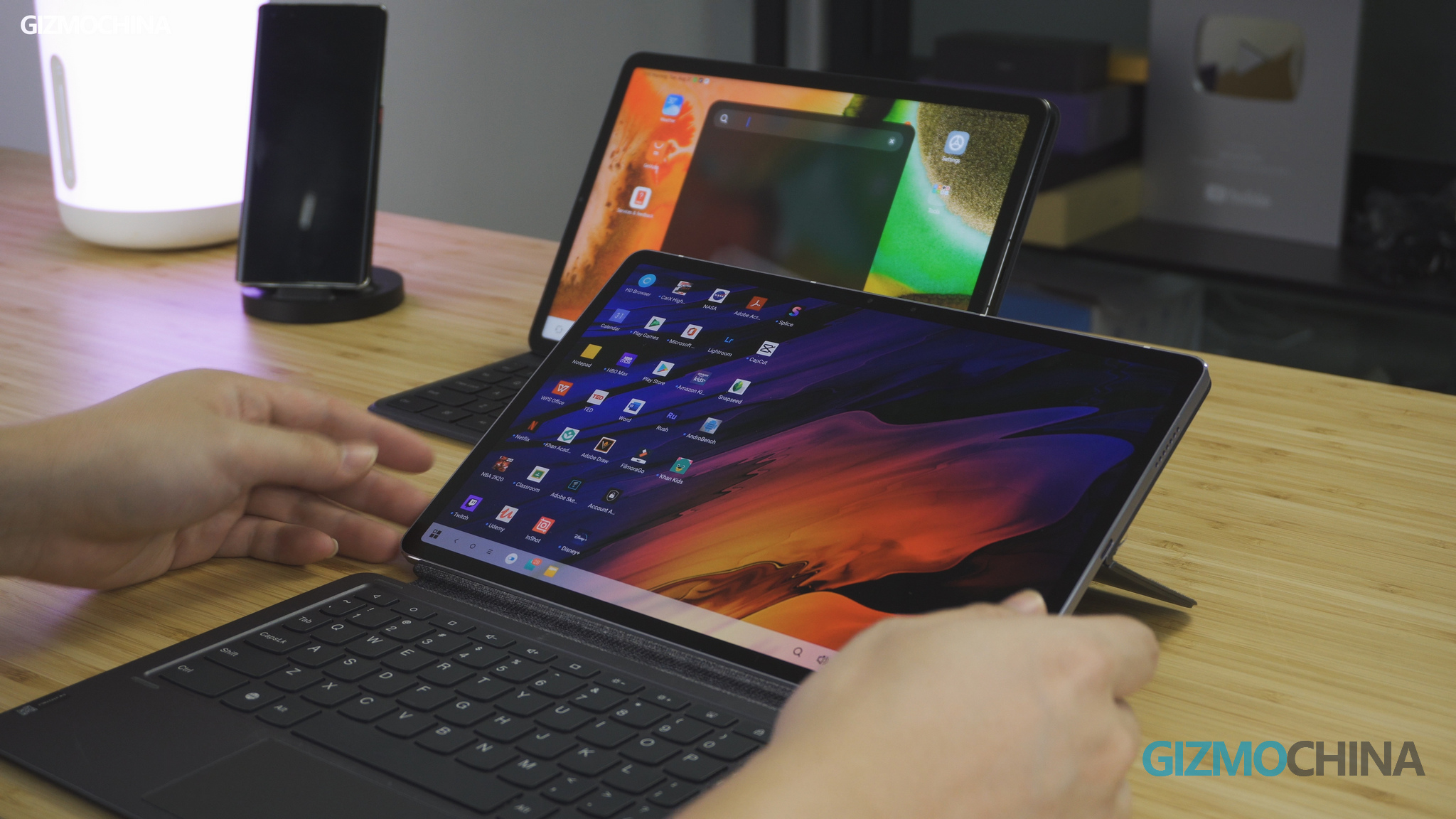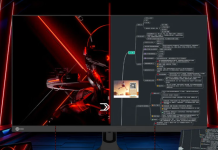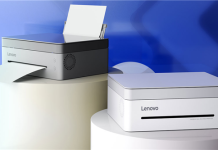In the past few weeks, we reviewed the Xiaoxin Pad Pro 2021 (review here) as well as the Mi Pad 5 Pro (review here). And I’m sure there are some people who would be interested to see how these two tablets compare with each other.
So today, let’s look deeper into these two tablets and find out whether the Mi Pad 5 Pro is worthy of its title as the ultimate value for money tablet, or whether the Xiaoxin Pad Pro can withstand the challenge.
Lenovo Xiaoxin Pad Pro 2021 vs Xiaomi Mi Pad 5 Pro: Design
Let’s start with their designs. If you just look at the pictures on your screen, you may prefer the minimal design of the Mi Pad 5 Pro rather than the splicing back design of the Xiaoxin Pad.
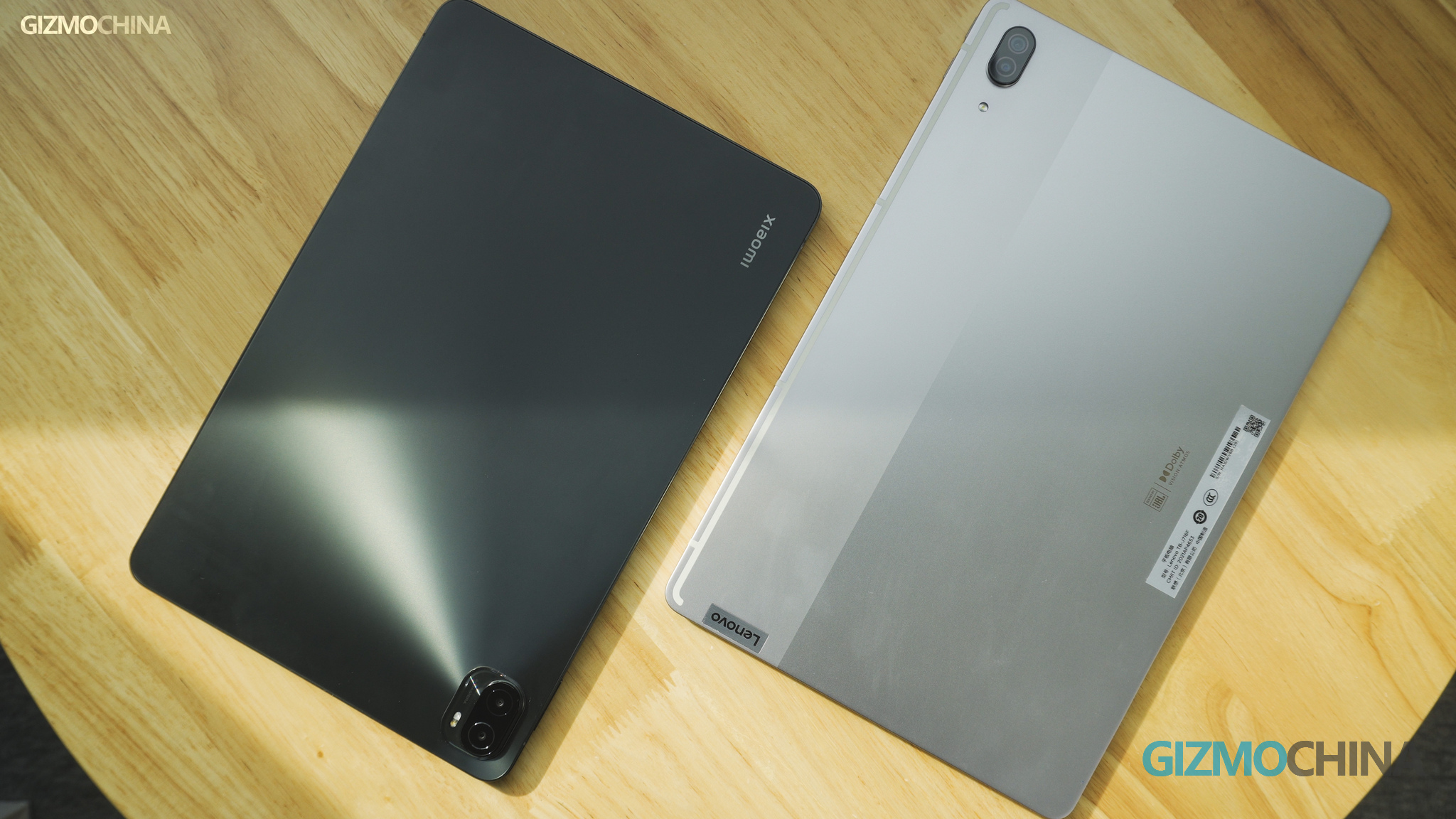 However, if you look closer and, in fact, use them for a while, you would come to the opposite conclusion. The Xiaoxin Pad Pro uses a metal unibody design which not just looks premium but significantly improves the holding experience. And strangely, although the Mi Pad 5 Pro features an 11-inch display which is slightly smaller than the size of the 11.5-inch Xiaoxin Pad Pro, the Xiaoxin Pad Pro is still thinner and lighter. And the Xiaoxin Pad Pro is also one of the thinnest tablets that you can have on the market.
However, if you look closer and, in fact, use them for a while, you would come to the opposite conclusion. The Xiaoxin Pad Pro uses a metal unibody design which not just looks premium but significantly improves the holding experience. And strangely, although the Mi Pad 5 Pro features an 11-inch display which is slightly smaller than the size of the 11.5-inch Xiaoxin Pad Pro, the Xiaoxin Pad Pro is still thinner and lighter. And the Xiaoxin Pad Pro is also one of the thinnest tablets that you can have on the market.
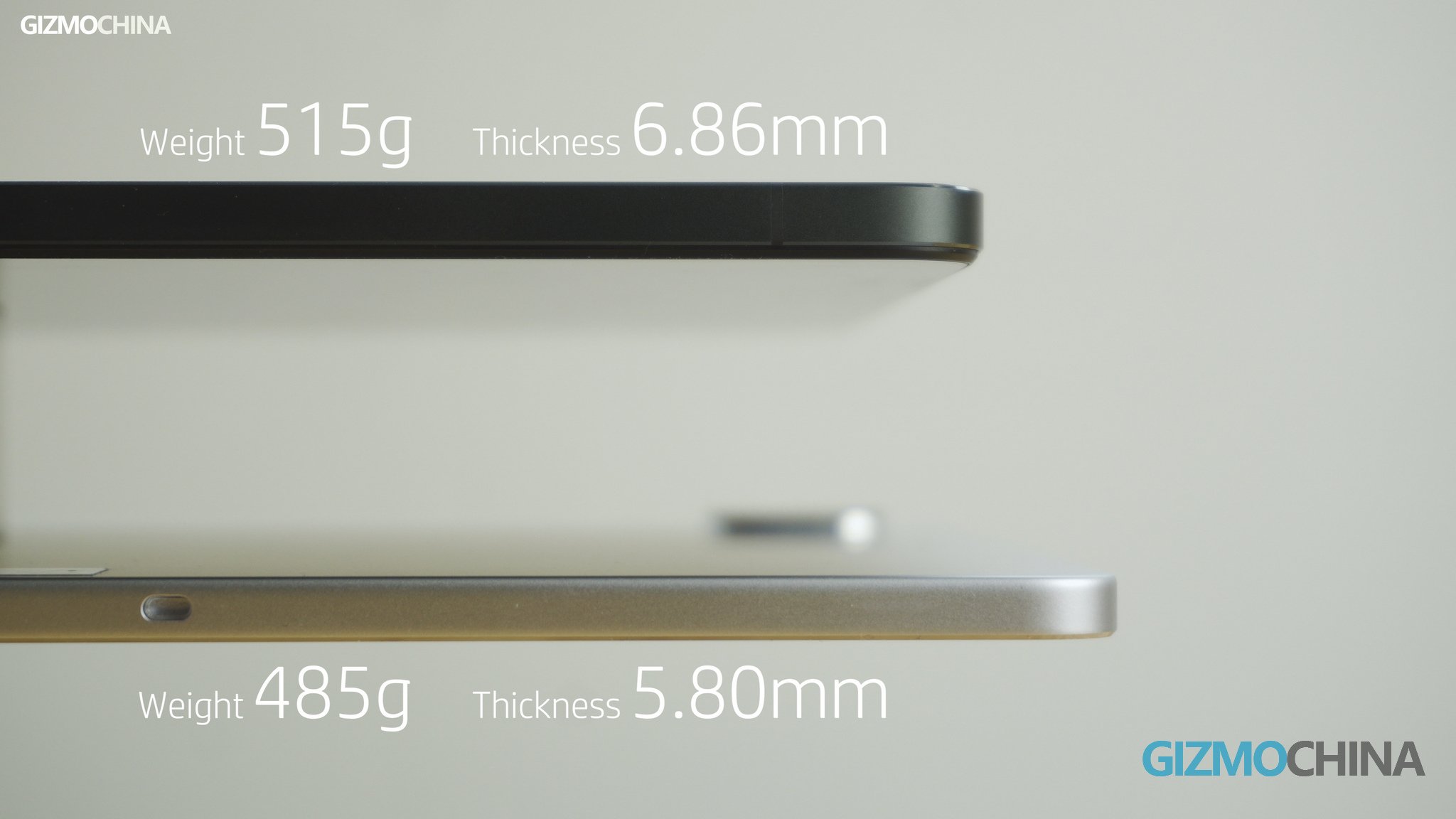
As for the Mi Pad Pro, its back cover is made of plastic with matte finish, which is slightly inferior to the Xiaoxin Pad in terms of the built quality. And its edges of the side frame are really sharp, which also causes slight discomfort when holding it.
So in terms of the body design and build quality, we think the Xiaoxin Pad Pro is the better option.
Displays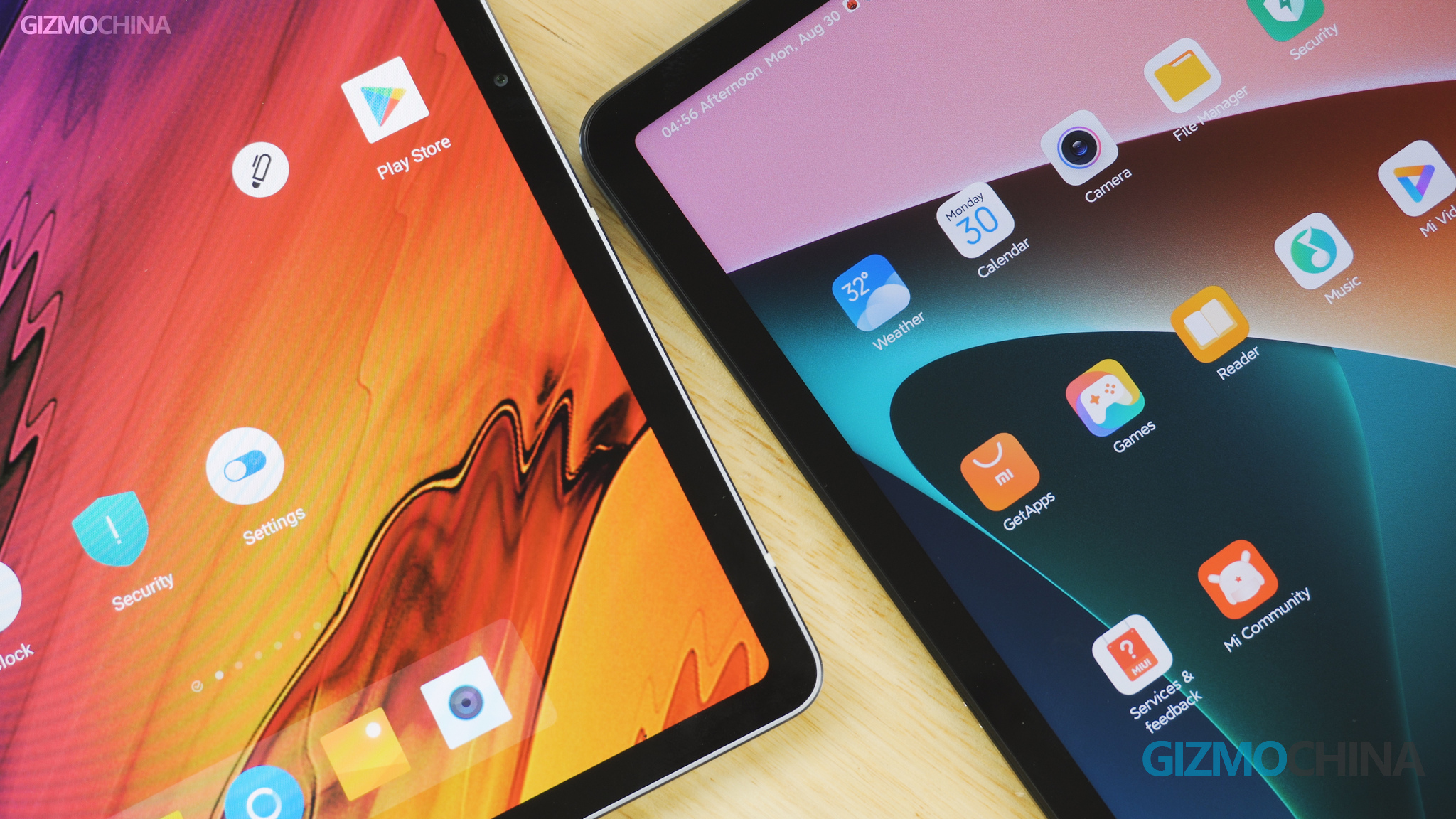
Let’s now look at their large displays, which is probably the most important part of this comparison. The Xiaoxin Pad Pro features an OLED screen with a 2.5K resolution and a 90Hz refresh rate, while the Mi Pad 5 Pro comes with an LCD panel featuring the same resolution and a 120Hz refresh rate. One of the most intuitive differences is that the OLED display of the Xiaoxin Pad supports Always on Display while the Mi Pad doesn’t. By far, Xiaoxin Pad Pro is still the only Android tablet at its price point that comes with an OLED screen.
In terms of color performance, the Mi Pad Pro supports Dolby vision and HDR with a peak brightness of 485nits. But looking back to the OLED panel of the Xiaoxin Pad, it brings a much better color presentation with higher contrast, and the brightness can reach at 589 nits. And it also has the wide support of Dolby Vision and HDR contents, with a slightly higher peak brightness. Even in our video, here, you can see the gap between the two displays. The Xiaoxin Pad Pro did look a little better during video playback.
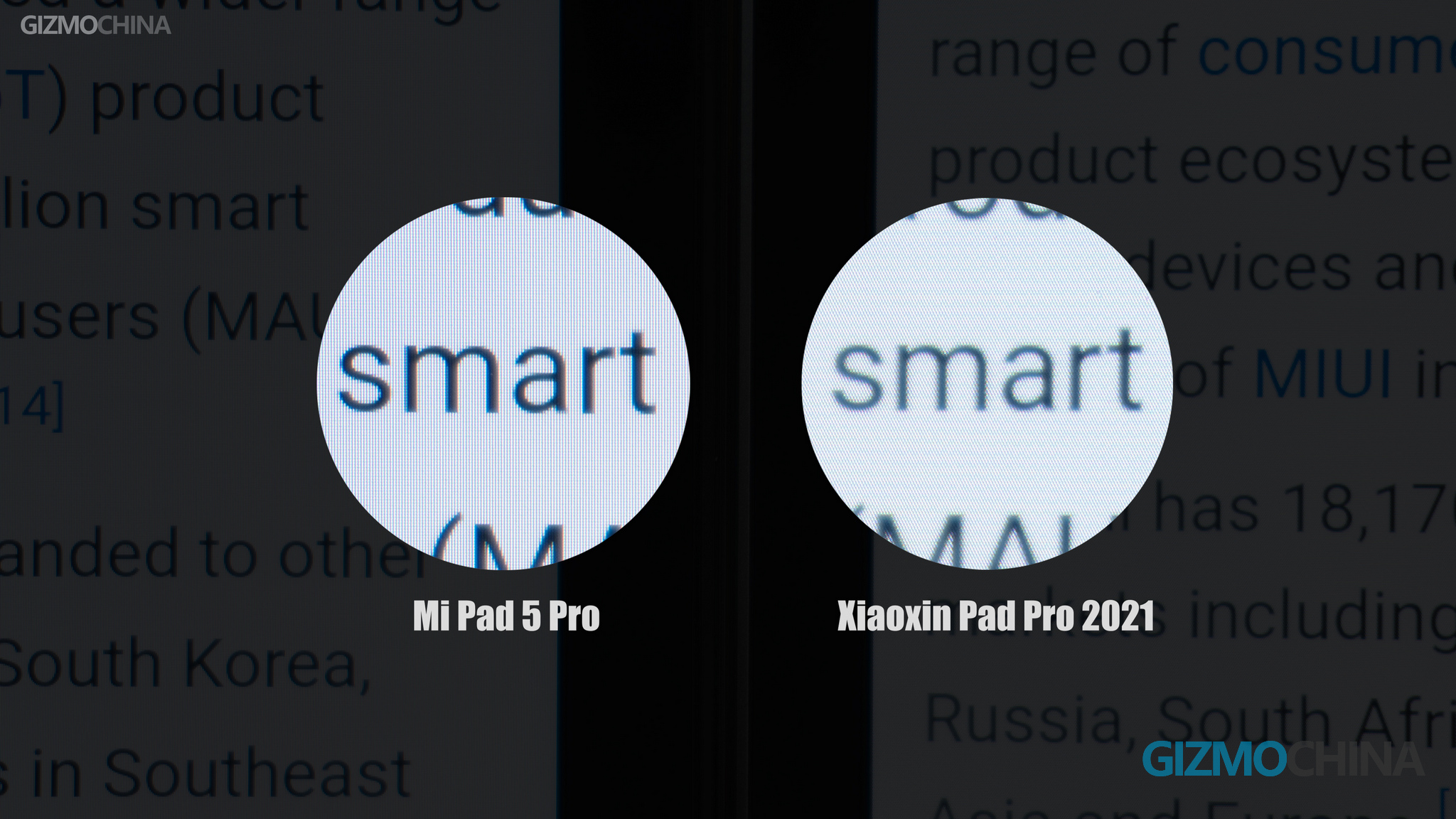
However, when it comes to text display, the OLED panel of the Xiaoxin Pad loses out due to its pixel arrangement. When we zoom into the display, it’s not difficult to find that the text edges are not as clear as the LCD display of the Mi Pad Pro. But in actual use, I believe most users would not perceive this difference. Still, if you are going to enjoy a lot of reading on a tablet, the Mi Pad will be a slightly better option for you.
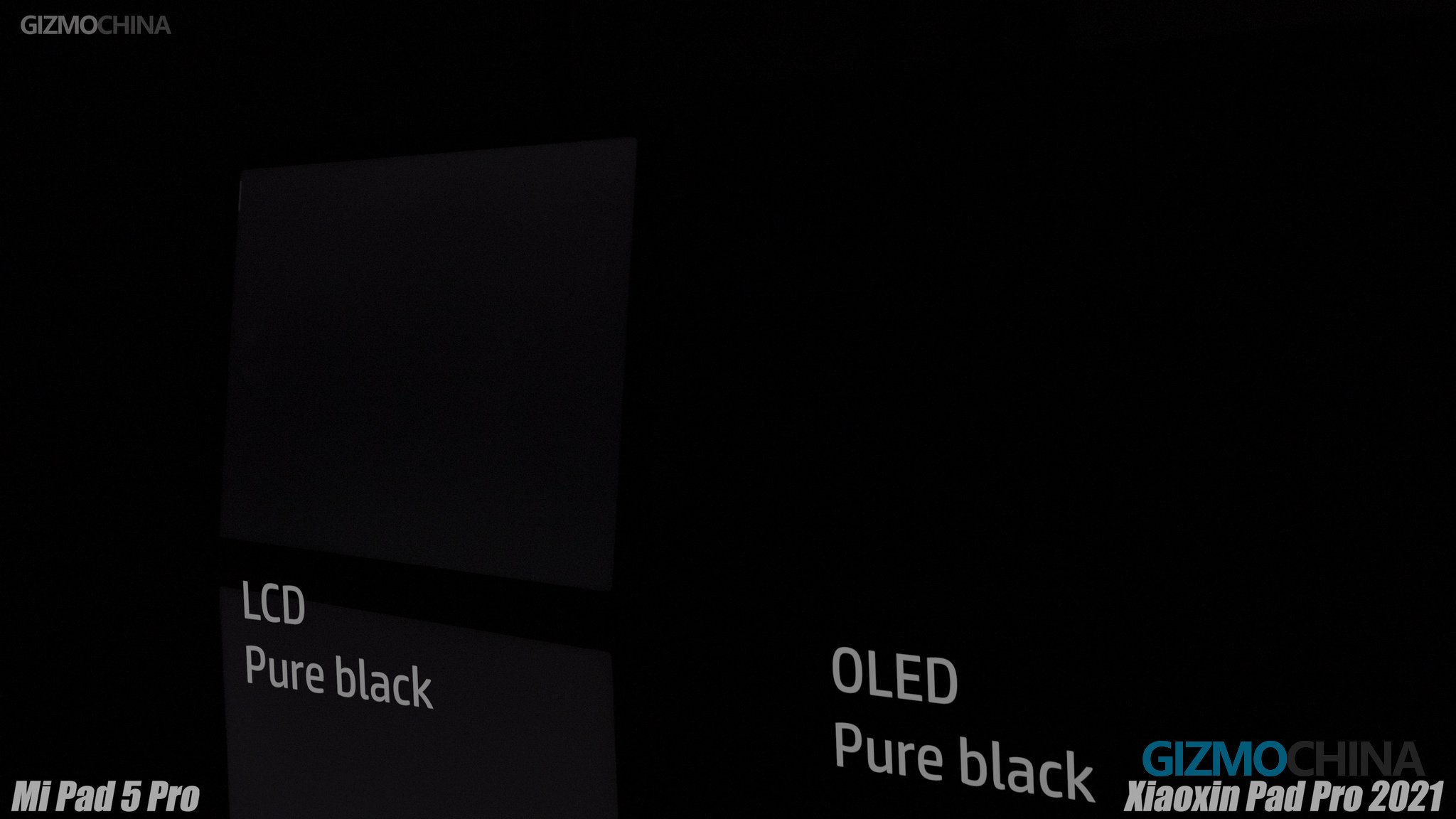
After two weeks of using these two tablets, I must admit that I spent more time on the Xiaoxin Pad’s OLED display. In addition to its excellent display quality, the screen experience is pretty assuring as I didn’t feel discomfort like I do on using some OLED screens when using for a long time.
On the other hand, the Mi Pad 5 Pro has a better audio department, thanks to the presence of 8 speakers tuned by Harman Kardon, while the Xiaoxin Pad Pro has 4 speakers tuned by JBL Audio. About their audio performance, you can check it here.
Lenovo Xiaoxin Pad Pro 2021 vs Xiaomi Mi Pad 5 Pro: Performance, Gaming
Both of them are powered by the same chipset: the Snapdragon 870, which is also the best processor that you can get in the market for Android tablets. And the Mi Pad Pro offers three optional memory configurations with up to 8GB RAM and up to 256GB ROM, while the Xiaoxin Pad Pro only has one version with 6GB RAM and 128GB ROM. But the good news is that the Xiaoxin Pad Pro supports MicroSD-card extension of up to 512GB.
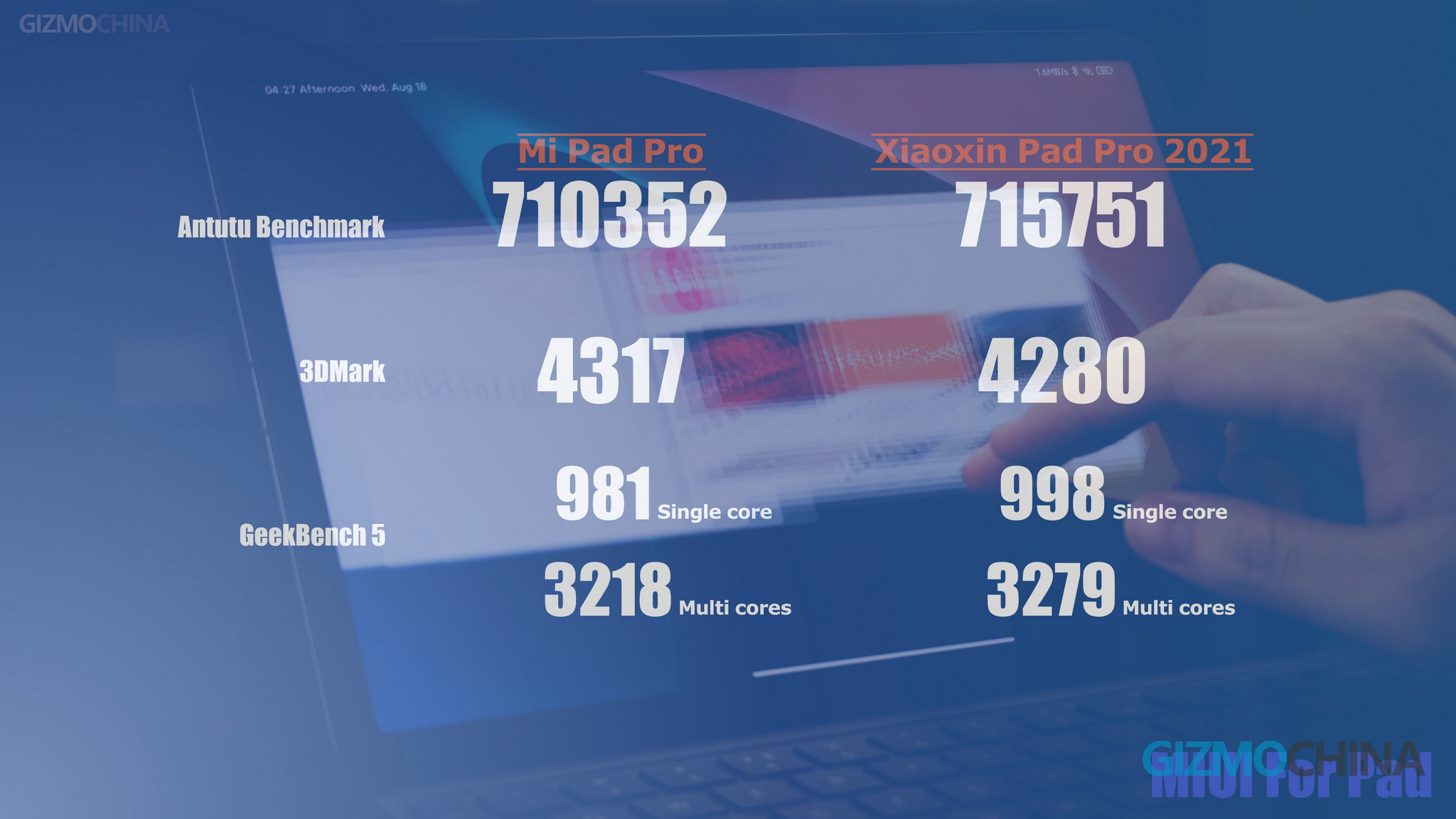
We’ve actually used the Xiaoxin Pad Pro for over a month. In the past one month, due to the limit of 6GB RAM, the tablet experienced a few minor lags when we opened too many apps. But fortunately, it was only for a few seconds. On the other hand, we have only used the Mi Pad Pro for over a week. There’s no such issue that we experienced with the Mi Pad during this time.
Apart from that, the tablets both could perform well in daily use, including light office work. And honestly, I can’t really pick which one has smoother performance. Even in benchmarks, their results are almost the same.
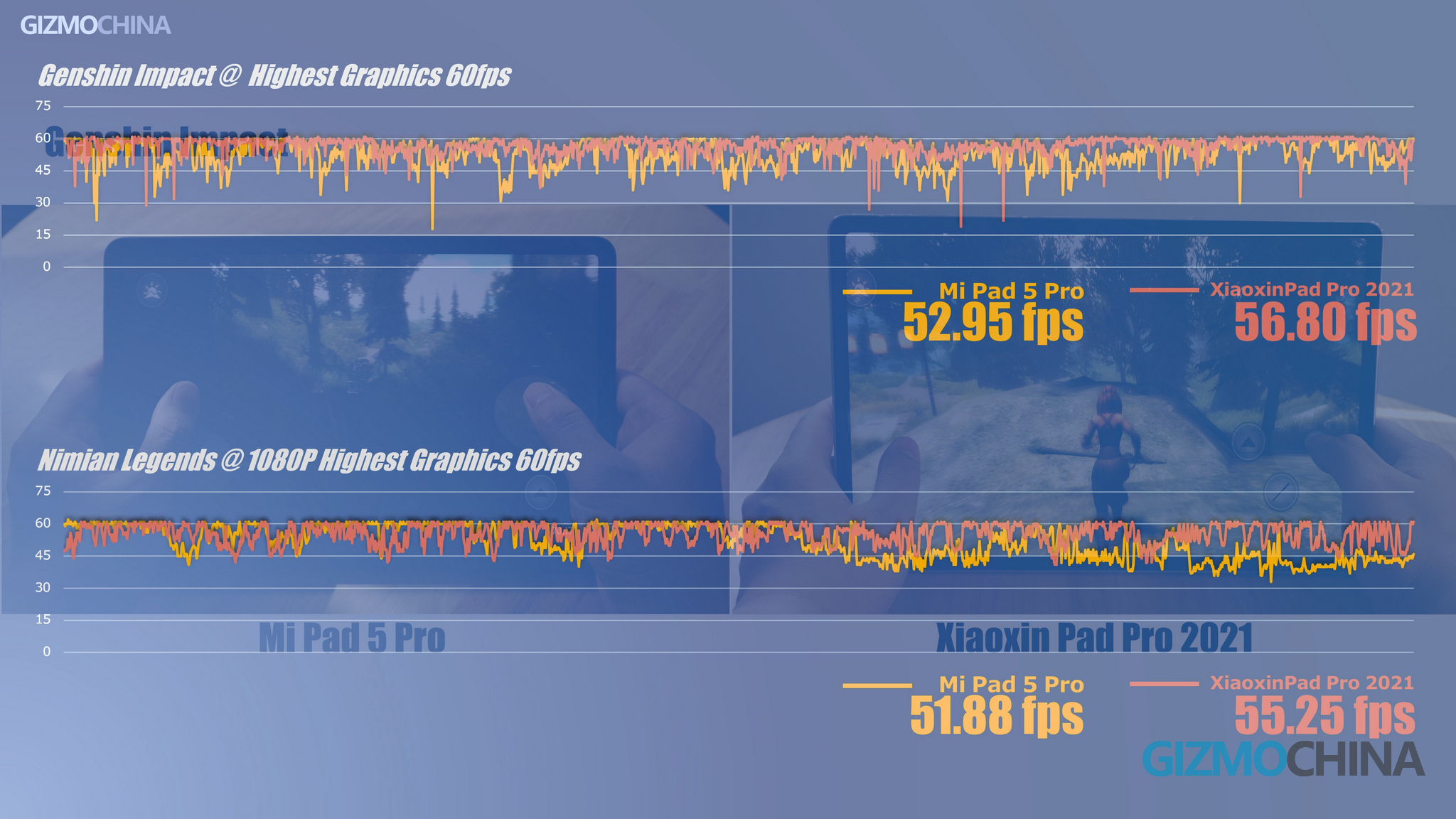
In actual gaming test, it seems that the Xiaoxin Pad’s metal unibody brings a better thermal performance. In games like Genshin Impact and Nimian Legends, the Xiaoxin Pad Pro could maintain a higher framerate stably without much fluctuation or any performance throttling. The Mi Pad Pro’s gaming performance was not bad though, but it’s more likely to meet the threshold in long-time gaming.
Like we said in the review of the Mi Pad Pro, the USB-C port is only compatible with USB-2 standard, which neither supports video output, nor high-speed data transfer. On the other hand, the Xiaoxin Pad Pro has a much more user-friendly USB port with support for USB3.1 and video output. So it’s unsurprising that the Xiaoxin Pad Pro completes our file transfer test much faster than the Mi Pad.
Lenovo Xiaoxin Pad Pro 2021 vs Xiaomi Mi Pad 5 Pro: Keyboard, Stylus
Now let’s talk about their official accessories – the keyboard and the stylus. The leather-like keyboard case of Mi Pad feels more premium than the woven case of the Xiaoxin Pad. And it’s also a bit lighter. If you are going to carry the tablet with the keyboard case, the compact size of Mi Pad would be a bit more convenient.
Both of them only support contact connection and has no Bluetooth wireless connection.
There’s only one way to use the Mi Pad’s keyboard, which is to put them together under a fixed angle. And the back attachment of the keyboard case is so weak that the back cover often came off the tablet when packing up.
But for the Xiaoxin Pad Pro, things were better. The back protection can be used as a stand for the tablet, and it can achieve almost any placement angle that you want on the table. By the way, the back protection is removable, so if you don’t like to work with the keyboard, it still a great Tablet Stand for you.
In addition, when compared to the Mi Pad’s keyboard, the Xiaoxin Pad’s has 12 more shortcut keys and a touchpad. With the Keyboard, the Xiaoxin Pad can work much more like a laptop under the PC Mode. On the other hand, the Mi Pad Pro doesn’t yet support the PC mode as they claimed at the launch event.
Although in terms of drawing latency, almost all the Android tablets’ styluses we experienced don’t compare to the Apple Pencil for iPad, we still could see the improvement on the Xiaoxin Pad Pro and the Mi Pad Pro. The gap has been reduced greatly. However, it’s strange that the Mi Pad Pro’s stylus has slightly lower latency in third-party apps than its performance in the official note app. Emmm… does it have something to do with MIUI? During our limited experience, we only found the WPS Office app and the official note app supporting a 120Hz refresh rate on the Mi Pad Pro.
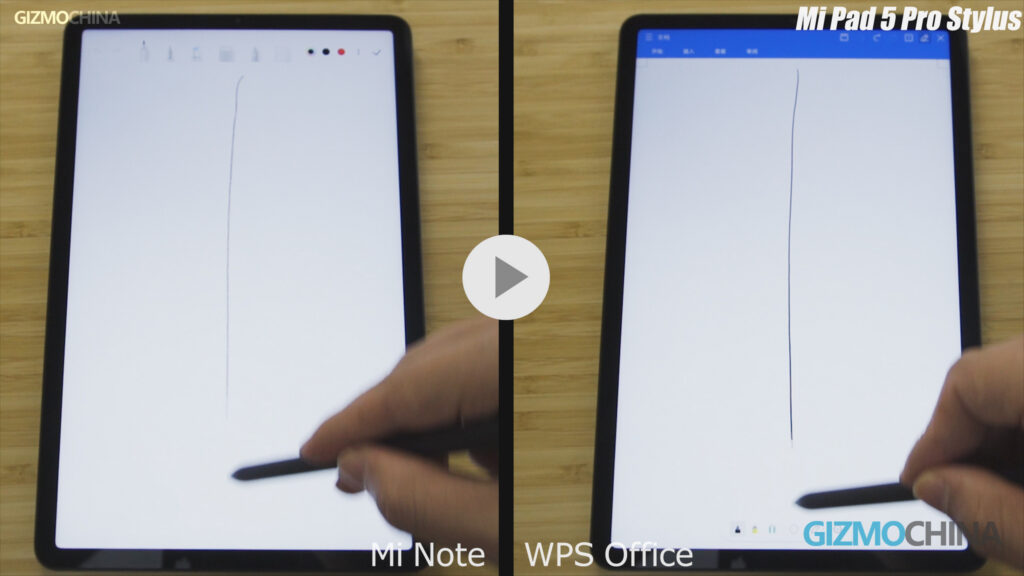
On the other hand, the Xiaoxin Pad Pro actually has a very close performance overdrawing latency to the Mi Pad’s stylus under most scenarios. And when it comes to writing experience, both feel good and are very close to each other. But thanks to the higher refresh rate, it was a close win for the Mi Pad Pro in this round.
What’s a bit disappointing is that the Xiaoxin Pad’s stylus doesn’t support magnetic charging and is not able to attach on the side of the tablet like the Mi Pad’s stylus. As a result, to charge the stylus, you have to open the flap at the end of the pen, and connect to a USB-C cable, which is really inconvenient.
Lenovo Xiaoxin Pad Pro 2021 vs Xiaomi Mi Pad 5 Pro: Software
Now let’s talk about their software. Well, as we mentioned in the review video of the Mi Pad Pro, MIUI is still the main issue that confuses us. Until now, Xiaomi hasn’t pushed any significant updates to fix the issues we mentioned, such as no PC Mode and unoptimized multi-app experience. There were also some other details that often annoyed me, such as the gesture of going back to home-screen. You need to swipe up from the bottom of the screen to achieve the gesture. But when we horizontally hold the tablet with single hand, it’s almost impossible to do it without the help of the other hand.
On Android tablets, the optimization of horizontal display for some apps is still a problem. These apps didn’t originally support landscape mode, and the tablet would still display the apps vertically even when you use it horizontally. But the PC Mode somehow can reduce this discomfort with its window mode for apps, and this is also the most significant advantage when compared with the Mi Pad Pro, even though it’s not perfect. More importantly, the touchpad of the keyboard is really a big plus, no matter for the Pad mode or the PC mode. We also found that there were a few complaints on the internet about crashes on the Xiaoxin Pad Pro. But so far it only happened once on our model.
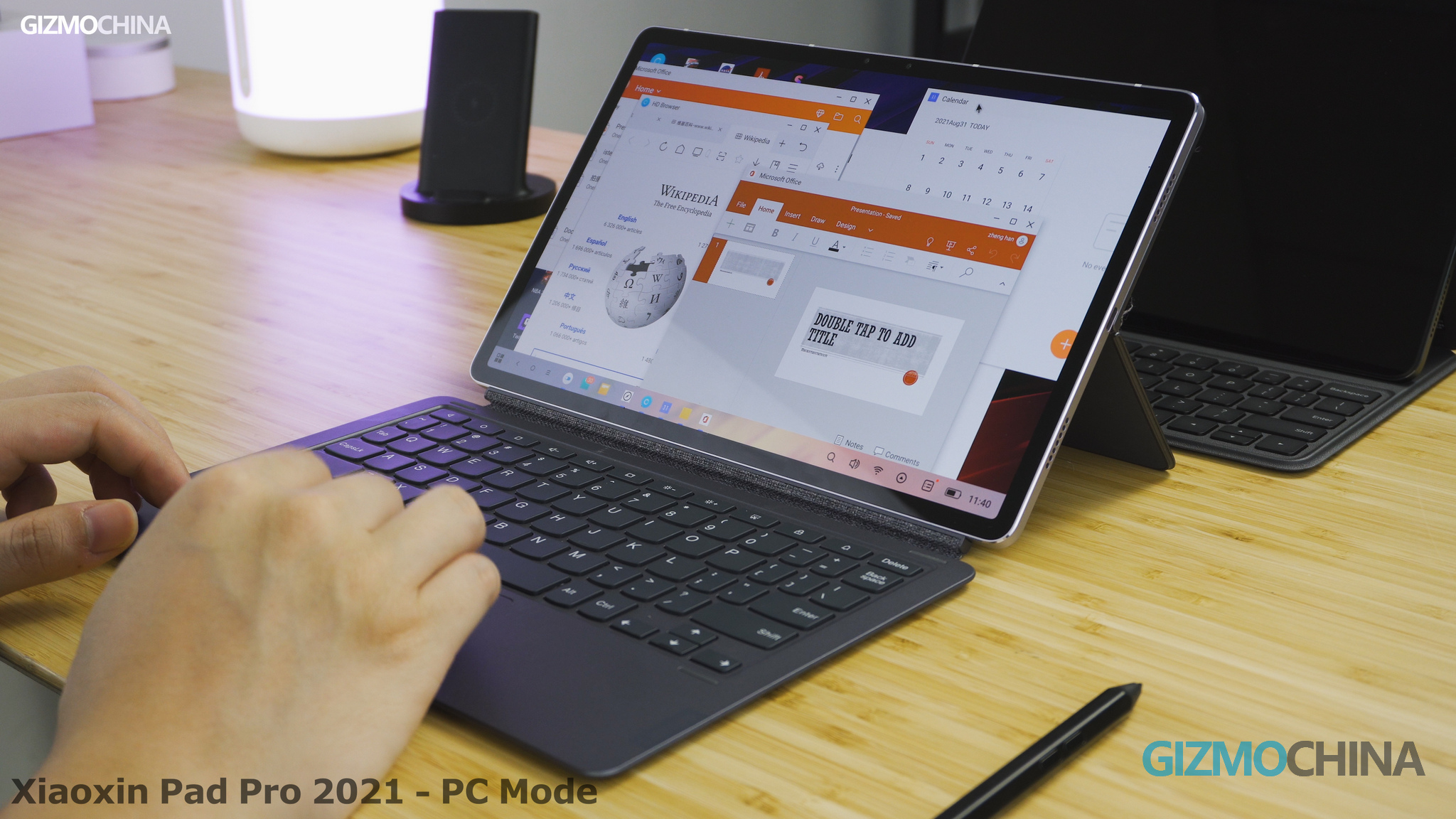
For software experience, we want to mention another competitor, the HUAWEI MatePad 11 (review here). By far it has the best software performance that we’ve experienced, no matter for its powerful multi-device collaboration or Multi-tasking capability. But if we are to bring in all the three tablets for a comparison, I will still choose the Xiaoxin Pad Pro.
Lenovo Xiaoxin Pad Pro 2021 vs Xiaomi Mi Pad 5 Pro: Battery & Charging
After a few software updates, the Xiaoxin Pad Pro’s battery performance has got improved. So we re-tested its battery performance in this comparison. The new result shows that they both took great advantage of the 8600mAh big battery. But pay attention that the Mi Pad Pro comes with 67W fast charge. It only took 1 hour to fully charge the big battery, while we spent over 2 hours to finish the test on the Xiaoxin Pad Pro with its 20W charging efficiency.
Verdict
To be honest, we’re pretty surprised by this comparison. The Mi Pad 5 Pro didn’t crush its rival in this competition. On the contrary, the Xiaoxin Pad Pro showed a more balanced performance. It’s also worth mentioning that the Xiaoxin Pad Pro has been in the market for over 2 months.
But anyway, both of them are still the top options in the Android tablet market. Although we mentioned a few differences between them, honestly we think that the experience gap is not that obvious. After all, most issues that we experienced in these two tablets stems from the nature of the Android platform.
So that’s all for today’s comparison. How do you like these two tablets?
RELATED:
- Xiaomi announces September 15 Global Launch event, likely for Mi 11T and Mi Pad 5
- Xiaomi 12 Concept pays tribute to the rested Mi branding with its M-shaped camera module
- Lenovo Xiaoxin Pad Plus 2021 may get rebranded as Lenovo Tab QT K11 Pro Wi-Fi

